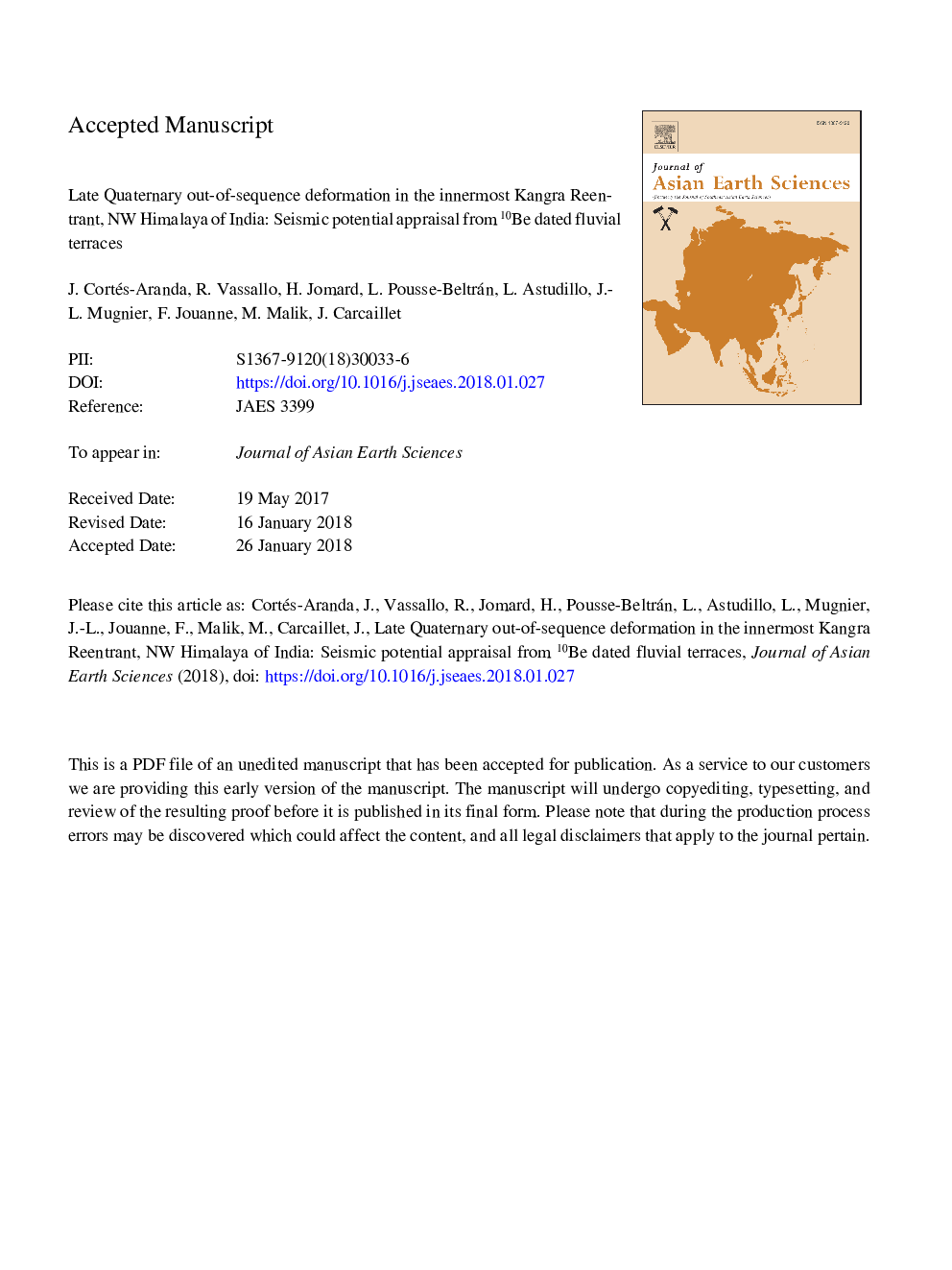| کد مقاله | کد نشریه | سال انتشار | مقاله انگلیسی | نسخه تمام متن |
|---|---|---|---|---|
| 8913987 | 1640315 | 2018 | 45 صفحه PDF | دانلود رایگان |
عنوان انگلیسی مقاله ISI
Late quaternary out-of-sequence deformation in the innermost Kangra Reentrant, NW Himalaya of India: Seismic potential appraisal from 10Be dated fluvial terraces
ترجمه فارسی عنوان
دگرگونی خارجی پس از چهار ماهه در کانگرا درونیترین هندی هالیلیا هند: ارزیابی بالقوه لرزه ای از دهه فصلی
دانلود مقاله + سفارش ترجمه
دانلود مقاله ISI انگلیسی
رایگان برای ایرانیان
موضوعات مرتبط
مهندسی و علوم پایه
علوم زمین و سیارات
زمین شناسی
چکیده انگلیسی
The Kangra Reentrant is a convex-to-the-northeast U-shaped structure in the NW Himalaya, where the Sub-Himalayan fold-and-thrust belt is â¼90â¯km wide. This region has not been struck by large earthquakes since the 1905 Mw 7.8 Kangra Earthquake. Out-of-sequence deformation has been reported at the millennial timescale along intracrustal thrusts within this reentrant, such as the Jawalamukhi Thrust. Up to now, the occurrence of out-of-sequence deformation along inner thrusts within the Kangra Reentrant, during the Late Quaternary, has not yet been addressed. In this study, the results of a neotectonic survey undertaken in this reentrant are presented; the studied zone is located between the Beas and the Neogad rivers, and encompasses from the Jawalamukhi Thrust to the Main Boundary Thrust. Two terraces that are deformed by branches of the Medlicott-Wadia Thrust, locally named the Palampur Thrust, are identified; this is evidenced in the field by metric-scale fault scarps. By using 10Be dating, the ages of these terraces were constrained to ca. 7.5 and ca. 6.2â¯ka. This is clear evidence of the Late Quaternary out-of-sequence deformation in the innermost part of this reentrant, implying that strain is distributed along all the arc-orthogonal extent of the local fold and thrust belt over this timespan. A cumulative slip rate of ca. 1â¯mm/yr along the studied thrusts, which represents 10% of the bulk-strain accommodated by the whole reentrant for this timespan, is calculated. In spite of the marginal appearance of this figure, this deformation rate is attributed to 7â¯<â¯Mwâ¯<â¯8 earthquakes triggered along the brittle/ductile zone of Main Himalayan Thrust and emerging at the surface along crustal ramps, such as those represented by the Palampur Thrust in the study area. Earthquakes of this magnitude may severely impact the Kangra District, which currently hosts 1.5 million people.
ناشر
Database: Elsevier - ScienceDirect (ساینس دایرکت)
Journal: Journal of Asian Earth Sciences - Volume 158, 1 June 2018, Pages 140-152
Journal: Journal of Asian Earth Sciences - Volume 158, 1 June 2018, Pages 140-152
نویسندگان
J. Cortés-Aranda, R. Vassallo, H. Jomard, L. Pousse-Beltrán, L. Astudillo, J.-L. Mugnier, F. Jouanne, M. Malik, J. Carcaillet,
